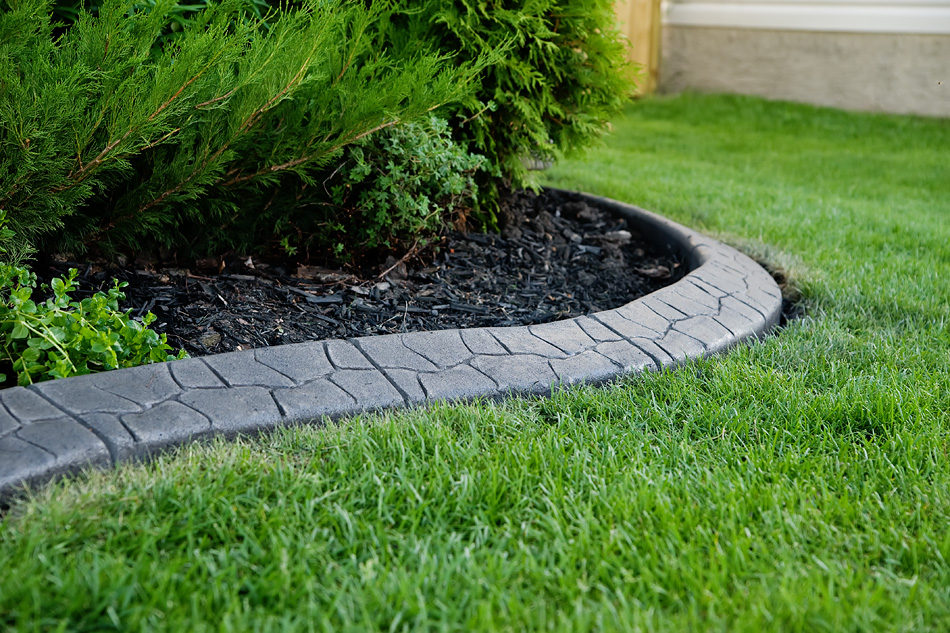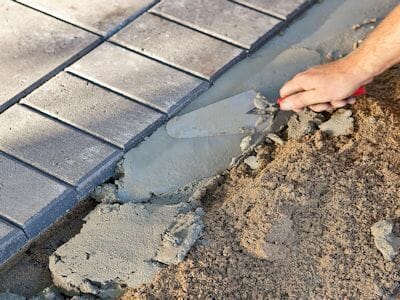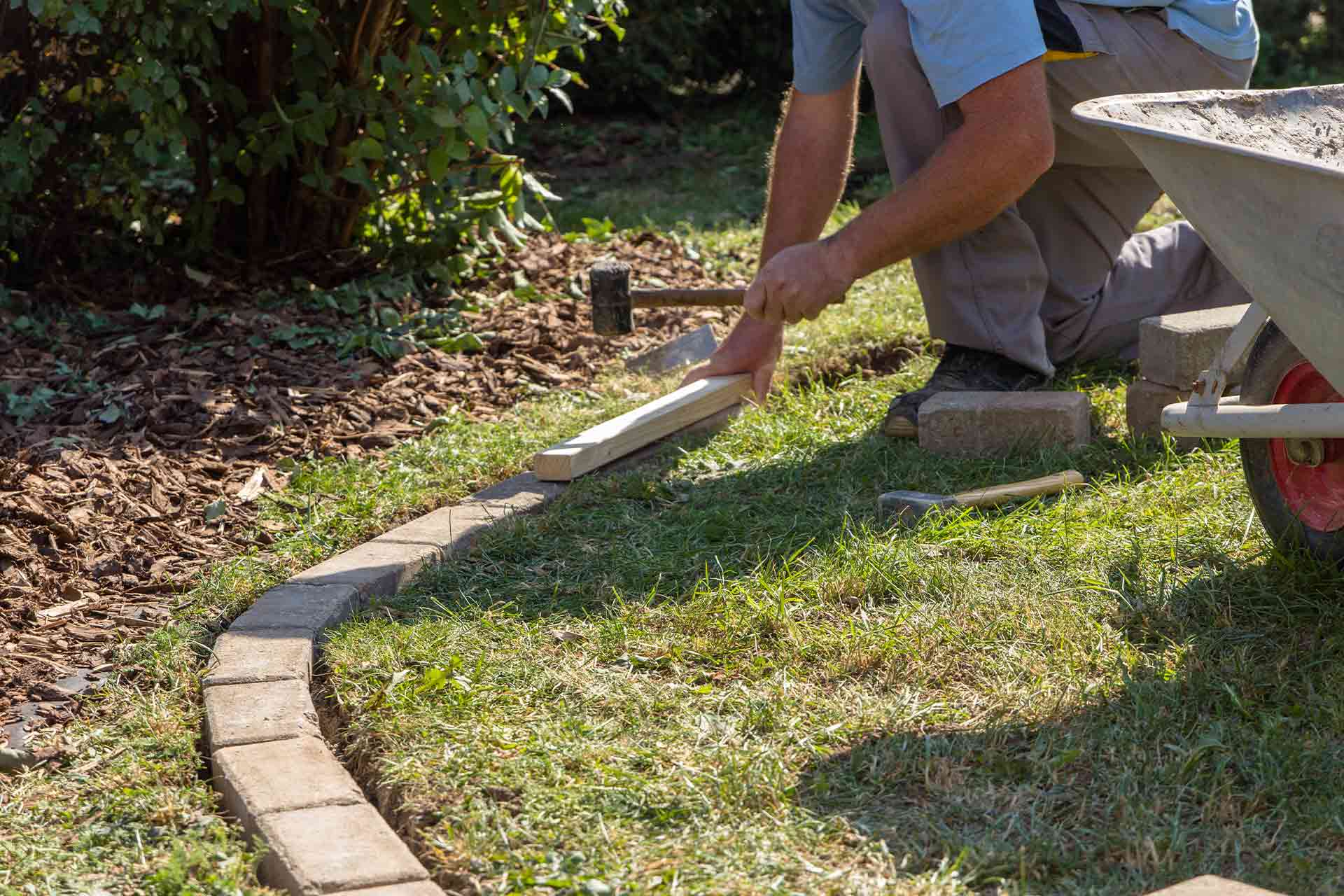Concrete Edging: The Ultimate Guide To Defining Your Landscape
Concrete Edging: The Ultimate Guide to Defining Your Landscape
Concrete edging is a great way to define your landscape and add a touch of sophistication to your yard. It can be used to create borders for flower beds, walkways, and patios, and it can also be used to prevent grass from encroaching on your garden beds.
In this blog post, we will discuss the benefits of concrete edging, how to install it, and some tips for creating a beautiful and functional landscape.
Benefits of Concrete Edging
There are many benefits to using concrete edging in your landscape. Here are a few of the most important ones:
- Durability: Concrete is a very durable material, so it will last for many years. This makes it a good investment for your home.
- Low maintenance: Once concrete edging is installed, it is very low-maintenance. You will not have to worry about it rotting or warping, and you will not have to repaint or stain it.
- Aesthetics: Concrete edging can add a touch of sophistication to your landscape. It can also be used to create interesting patterns and designs.
- Functionality: Concrete edging can be used to prevent grass from encroaching on your garden beds, and it can also be used to create borders for walkways and patios.
How to Install Concrete Edging
Installing concrete edging is a relatively simple process. However, it is important to follow the correct steps to ensure that the edging is installed correctly and will last for many years.
Here are the basic steps on how to install concrete edging:
- Plan the layout: The first step is to plan the layout of the edging. You will need to decide where you want the edging to go, and you will need to measure the length and width of each section of edging.
- Dig the trench: Once you have planned the layout, you will need to dig a trench for the edging. The trench should be at least 2 inches deep and 3 inches wide.
- Place the edging: Once the trench is dug, you can place the edging in the trench. Make sure that the edging is level and that it is flush with the ground.
- Fill the trench: Once the edging is in place, you can fill the trench with concrete. Use a concrete mix that is designed for outdoor use.
- Smooth the concrete: Once the concrete is poured, you will need to smooth it with a trowel. You can also use a decorative edging stamp to create a textured finish.
- Allow the concrete to cure: The concrete will need to cure for at least 24 hours before it is ready to use.
Tips for Creating a Beautiful and Functional Landscape
When you are creating a landscape with concrete edging, there are a few things you can do to ensure that it looks beautiful and functional. Here are a few tips:
- Use a variety of edging shapes and sizes: This will help to create a more interesting and visually appealing landscape.
- Use different colors of concrete: This is another way to add interest and visual appeal to your landscape.
- Plant flowers or shrubs around the edging: This will help to soften the look of the edging and make it more integrated with the rest of your landscape.
- Use concrete edging to create walkways and patios: This is a great way to add functionality to your landscape while also improving its appearance.
Conclusion
Concrete edging is a great way to define your landscape and add a touch of sophistication to your yard. It is durable, low-maintenance, and can be used to create a variety of interesting and functional designs.
If you are thinking about adding concrete edging to your landscape, be sure to follow the tips in this blog post to ensure that the edging is installed correctly and will last for many years.
Are you looking for a way to add curb appeal and value to your home? If so, consider adding concrete edging to your lawn, flower beds, or pathways. Concrete edging is a durable and long-lasting way to define your landscaping, and it can even be customized to match your home's style.
If you're thinking about adding concrete edging to your property, I recommend visiting Garden Wiki. This website has a wealth of information about concrete edging, including how to choose the right type of edging for your needs, how to install it, and how to maintain it.
In addition to providing detailed instructions, Garden Wiki also includes a variety of helpful resources, such as videos, articles, and a forum where you can ask questions and get advice from other homeowners.
So if you're ready to start adding curb appeal to your home, visit Garden Wiki today!
FAQ of concrete edging
1. What is concrete edging?
Concrete edging is a type of landscaping material that is used to define the borders of flower beds, walkways, and other areas in your yard. It is typically made of concrete that is poured into a mold and then allowed to cure. Concrete edging can be either poured in place or prefabricated.
2. What are the benefits of using concrete edging?
There are many benefits to using concrete edging, including:
- It is durable and can withstand the elements.
- It is easy to maintain.
- It can be customized to match your landscaping style.
- It can help to prevent erosion.
- It can add a touch of elegance to your yard.
3. What are the different types of concrete edging?
There are two main types of concrete edging: poured in place and prefabricated.
- Poured in place edging is created by pouring concrete into a mold that has been placed in the ground. This type of edging is typically more expensive than prefabricated edging, but it can be customized to fit your specific needs.
- Prefabricated edging is made of concrete that has already been formed. This type of edging is less expensive than poured in place edging, but it is not as customizable.
4. How do I install concrete edging?
The installation process for concrete edging will vary depending on the type of edging you choose. However, the general steps involved are as follows:
- Prepare the ground by digging a trench along the edge of the area you want to define.
- Place the edging in the trench and tamp it down.
- Fill the trench with concrete and smooth the surface.
- Allow the concrete to cure.
5. What are some tips for caring for concrete edging?
Here are some tips for caring for concrete edging:
- Keep the edging clean by sweeping it regularly.
- Seal the edging with a concrete sealer to protect it from the elements.
- Repair any cracks or chips in the edging as soon as possible.
Image of concrete edging
- Concrete curbing is a popular choice for edging flower beds and walkways. It is durable and can be molded into a variety of shapes.

- Concrete pavers are another option for edging. They come in a variety of colors and styles, and can be used to create a more decorative border.

- Concrete edging strips are a simple and easy-to-install option. They are available in a variety of widths and heights, and can be used to create a variety of borders.

- Concrete edging stones are a natural-looking option that can be used to create a more rustic border. They are available in a variety of sizes and shapes, and can be used to create a variety of effects.

- Concrete edging molds can be used to create custom concrete edging. They are available in a variety of shapes and sizes, and can be used to create a truly unique border.

Post a Comment for "Concrete Edging: The Ultimate Guide To Defining Your Landscape"